
You are soon to discover that as enchanting as No Mow May is, it’s about so much more than beauty or helping the bees. Though for those two reasons alone, it’s time to leave the mower in peace (till the end of the month at least) and let as many blossoms appear as earthly possible.
In the meantime, you get to sit back and relax with a glass of violet lemonade in your hand.
Instead of working hard, you can engage in the act of hardly working, as you watch butterflies and other insects fly about a dream world of flowers filled with sweet, nutritious pollen.
No Mow May is mostly for them, of course. And for the sake of biodiversity it’s something worth doing well. Or rather, doing nothing at all.
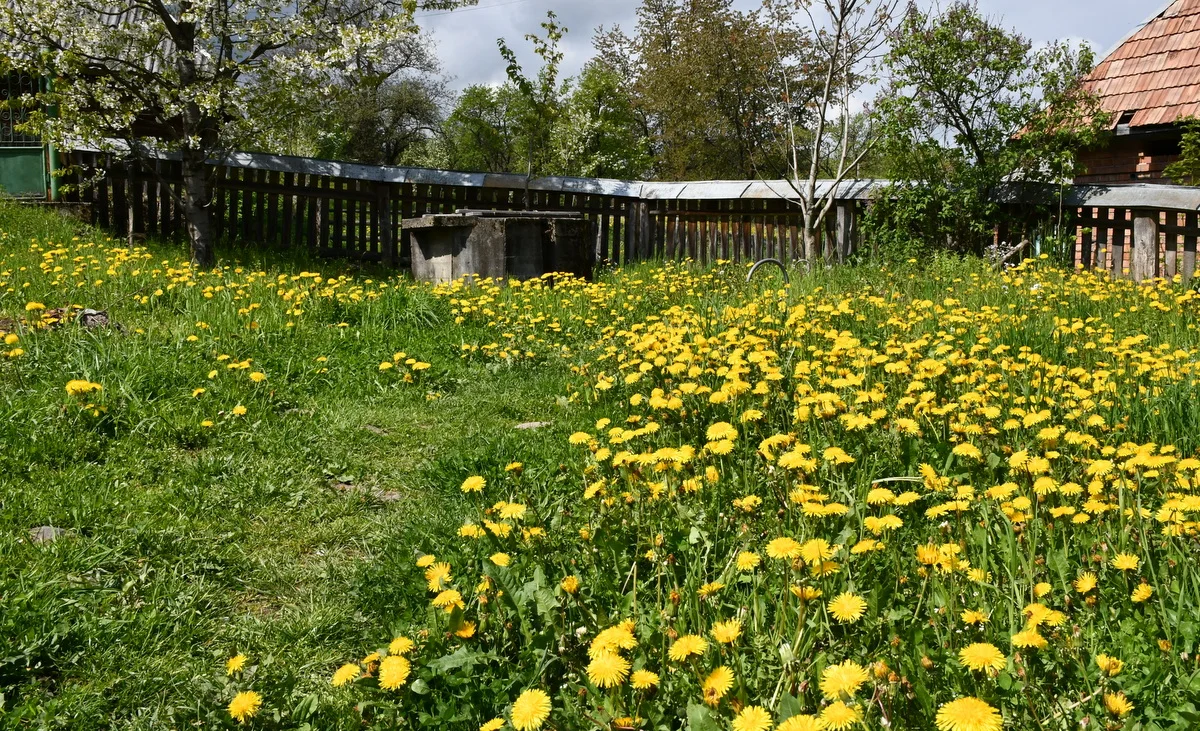
Go engine-less in the backyard for one month and you’ll notice other sounds instead.
The birds are singing constantly from sunup to sundown. The bees, bumblebees and wasps are buzzing about, warming their bodies after a long winter.
Overall, an unmown lawn is super busy and chaotic with some natural pizzazz. Now, some people might refer to that as unkept or neglected, but I beg to differ. Compare that to a freshly mowed field of grass and you’ll observe far fewer insects, and not a blossom in sight.
No Mow May has come along to change that.
What Is No Mow May?
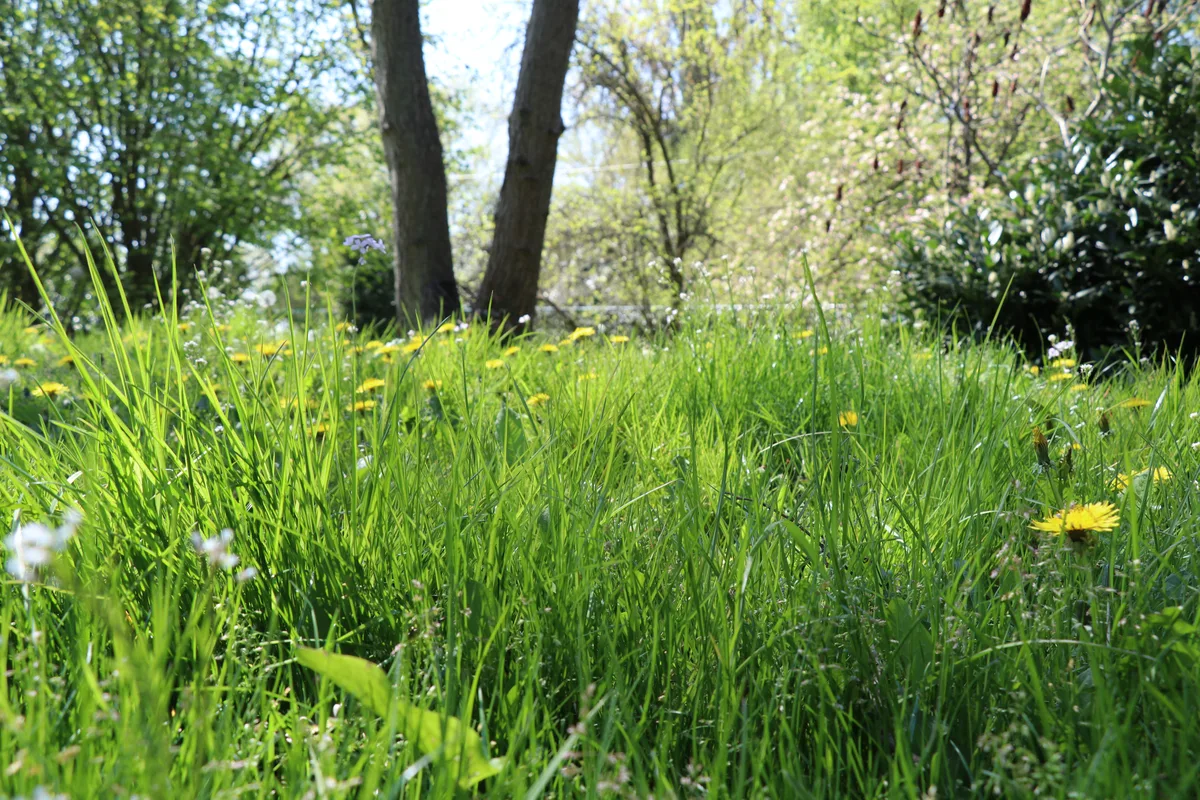
No Mow May is a conservation initiative first proposed by Plantlife in the United Kingdom.
Because the amount of pollinators are on the decline on a worldwide level, it’s time we gave their numbers a boost. The best way we can come to their aid is by doing less. In other words, letting the grass grow, just as it used to before mowers became commonplace.
Google the history of lawns and you’ll quickly find out that sheep used to do the job of cutting the grass as early as the 17th century. It became a status symbol, a sign of wealth, to have the shortest well-kept patch of grass. The grass closest to the home was scythed by hand.
Have you ever tried to mow your lawn with a scythe?
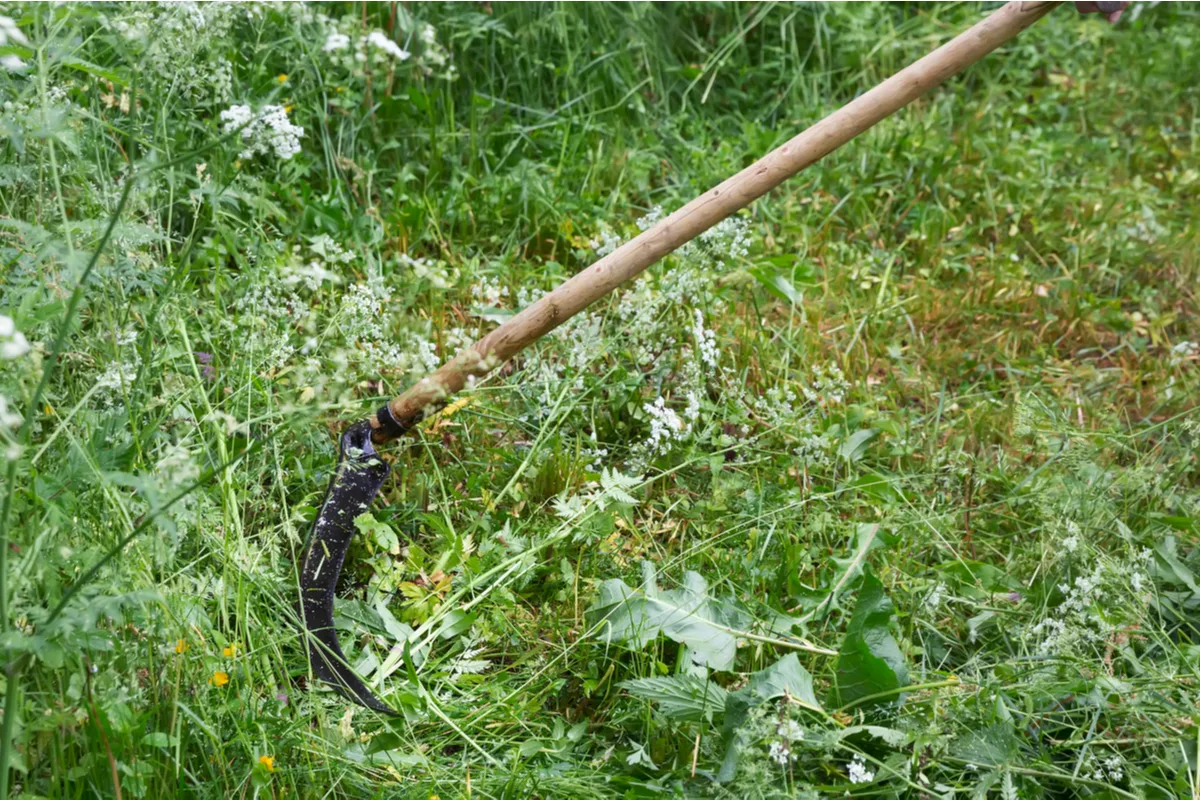
If so, you’ll know that the longer the grass blades are, the easier they are to cut down. It’s a hard job, but it works, giving you plenty of exercise and leaving thousands of wildflowers for the bees and other early- season pollinators.
The modern mower and weed eaters/strimmers have made physical work easier, but have they left enough room for nature?
Give No Mow May a try and you’ll quickly discover the answer for yourself.
5 Tips For A Dazzling No Mow May
In order to fully enjoy your growing lawn, it’s beneficial to learn a thing or two about rewilding your garden. You’ll find that not mowing is the first step to rewilding and this makes perfect sense. Because when you leave nature to its own devices, the first thing it does, is cover the ground. You don’t need to look further than your own vegetable garden for direct experience, i.e. weeds.
Read on to gather ideas on how to embrace a No Mow May. In the end you might inspire others to do the same as we grow a gigantic mass of wildflowers with the help of nature.
1. Let The Grass and Other Plants Grow
Refrain from the desire to cut your lawn and stop trying to manicure it into something it doesn’t want to be – tamed. Now is the time to proudly show the beauty your lawn has to offer.
Maybe there is a certain level of rebellion needed here. But it’s worth remembering that not all traditions are good for the long term. We need to open up to new ideas and adapt to changes.
While it’s nice to have a short grass lawn to play ball in, consider how much, and how often, you use your lawn in the first place. Then make the decision to mow accordingly.
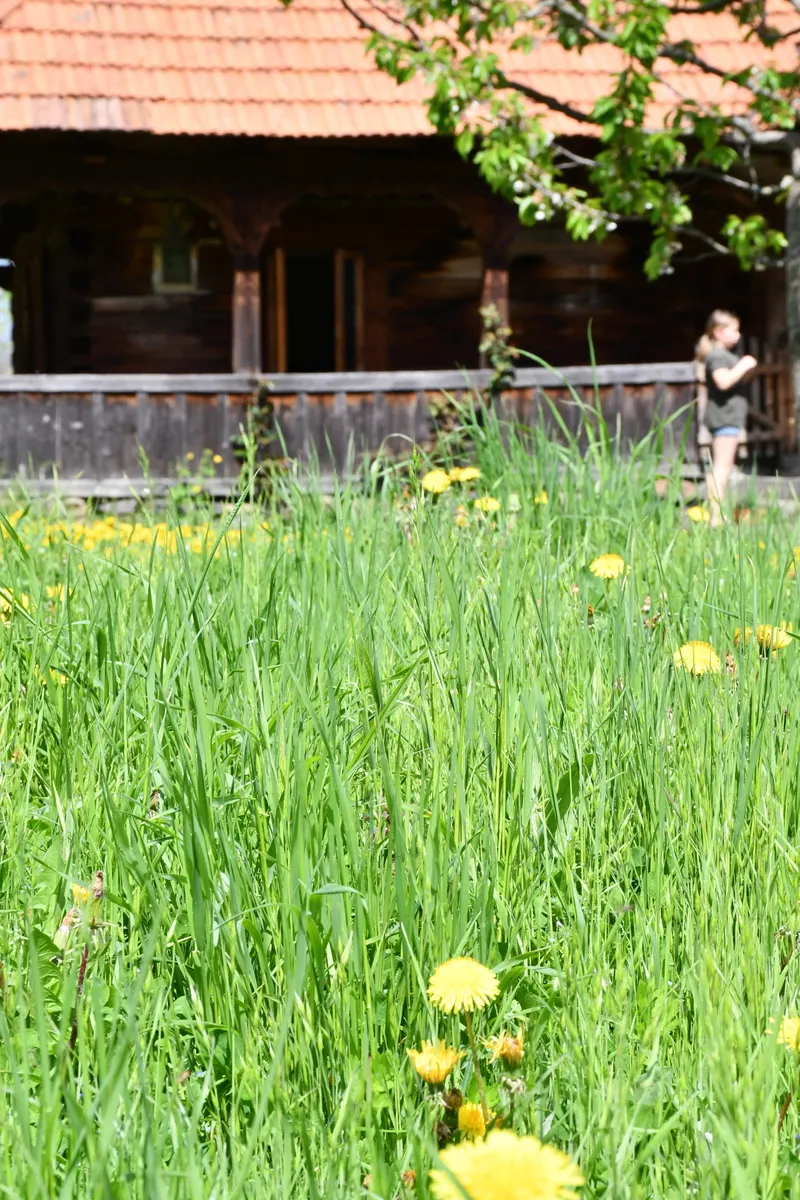
It may be that you make use of just half the land your backyard has to offer. Mow as much as you need for yourself and your family, and dedicate the rest to nature.
2. Embrace Diversity
If you want to see a dazzling display of flowers in your backyard, you can spend some time and money planting flowers (or scattering some wildflower seed bombs) among the edges, or go all out by doing nothing and be amazed at what grows. It’s for free, so you have nothing to lose.
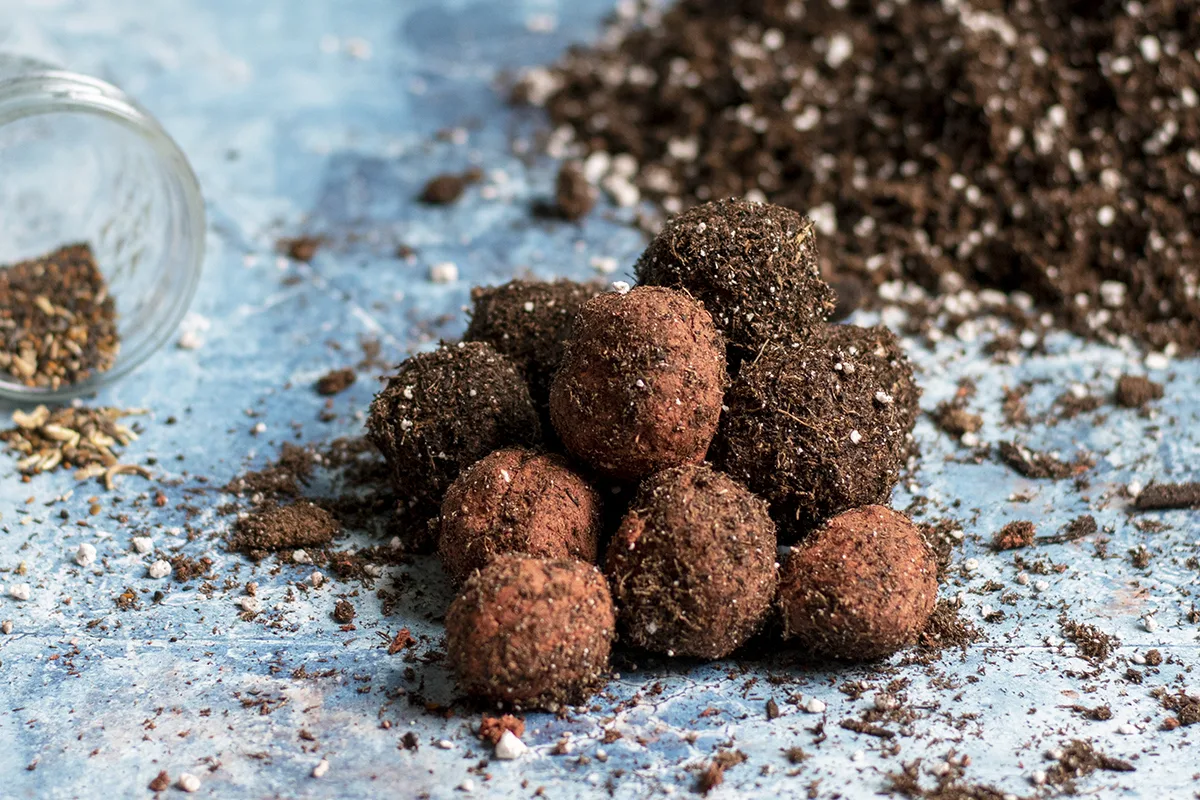
As new-to-you plants come up in your lawn, grab a plant identification book and learn about all the wonders growing up under your feet. You’ll likely know the obvious ones, such as the hard-to-miss dandelions. If you accidentally brush against nettle, you’ll definitely feel it, perhaps all day long. It’s a reminder to be more careful next time.
Maybe you’ll even be able to point out the cleavers.
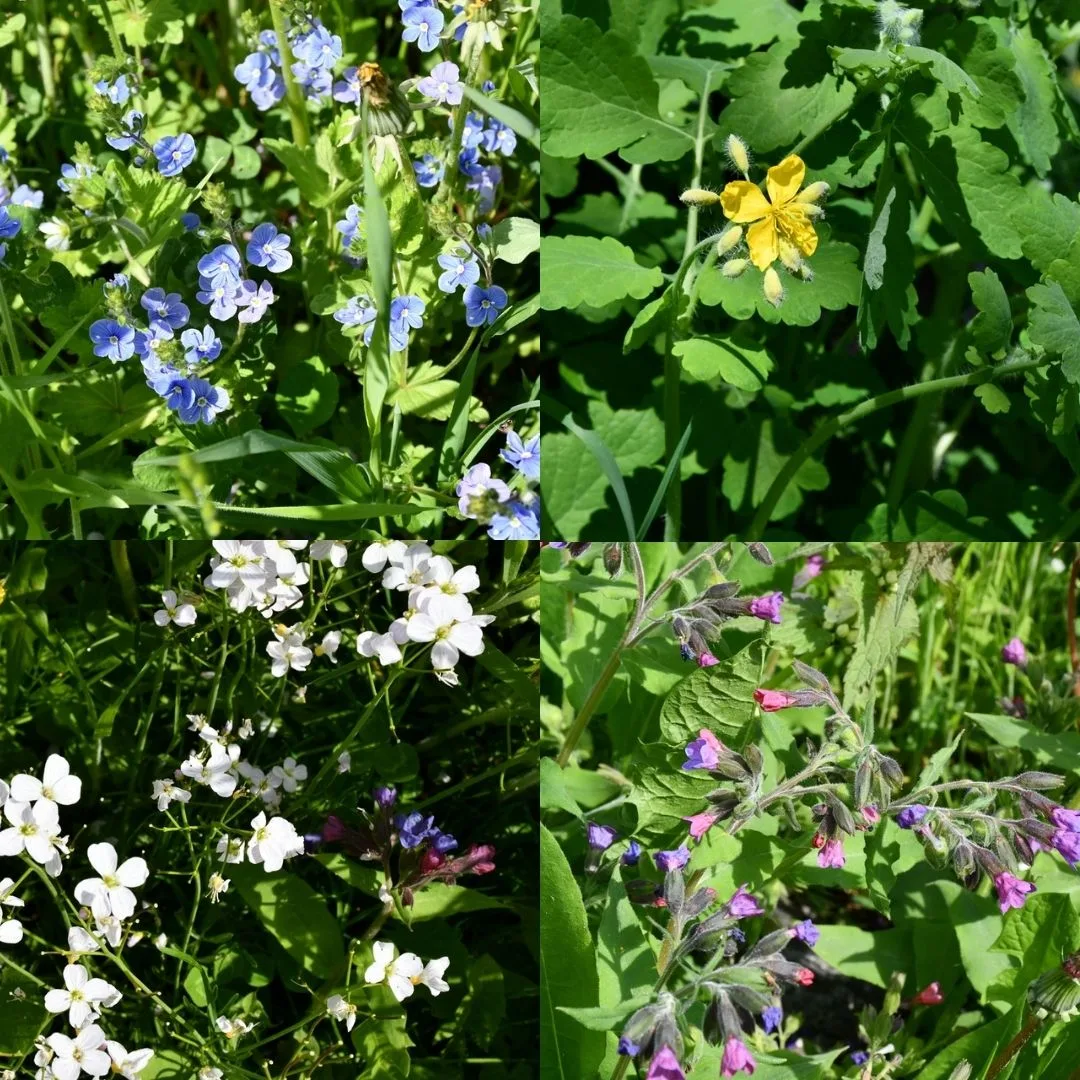
What about chickweed, lungwort, purple dead nettle, shepherd’s purse, forget-me-nots, oxeye daisies or plantain of the narrow and broad leaf kinds?
Greater celandine (Chelidonium majus), when allowed to grow, is favored by bumblebees, as well as white dead nettle (Lamium album).
If that’s not enough diversity, just for starters, to stop mowing, I don’t know what is.
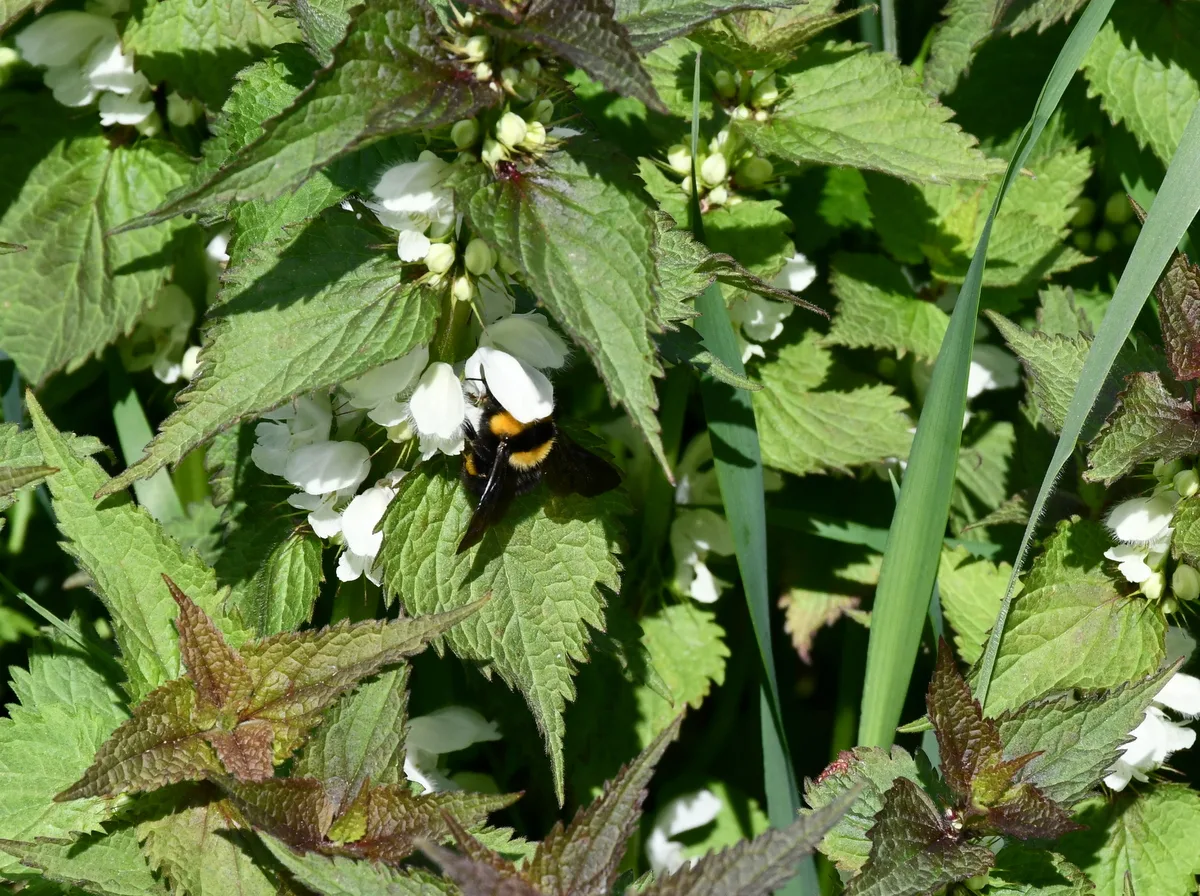
3. Eat Your Weeds
No Mow May, as it turns out, can grow into an edible landscape. That is, if you are a keen forager looking for a wild bite to eat.
When you let your lawn grow, dandelions will be among the earliest of greens to pop up. Shortly after, they will burst forth as a golden blanket ripe with pollen. One garden myth that we’d like to dispel is that you need to save the dandelions for the bees. Although they do use it, wildflowers and tree pollen actually come first on their list.
So, go ahead and eat as many dandelion greens as you can, provided they are unsprayed, of course. As you are not mowing your lawn this No Mow May, this should really be tip number one. Do nothing really means just that. Don’t total your lawn, adopt organic methods instead.
As you do that, you are free to eat whatever else comes up. Nettles, chickweed, yarrow leaf and plantain are backyard staples for us this time of year.
Related reading: 25 Edible Wild Plants To Forage For In Early Spring
4. Mow A Path
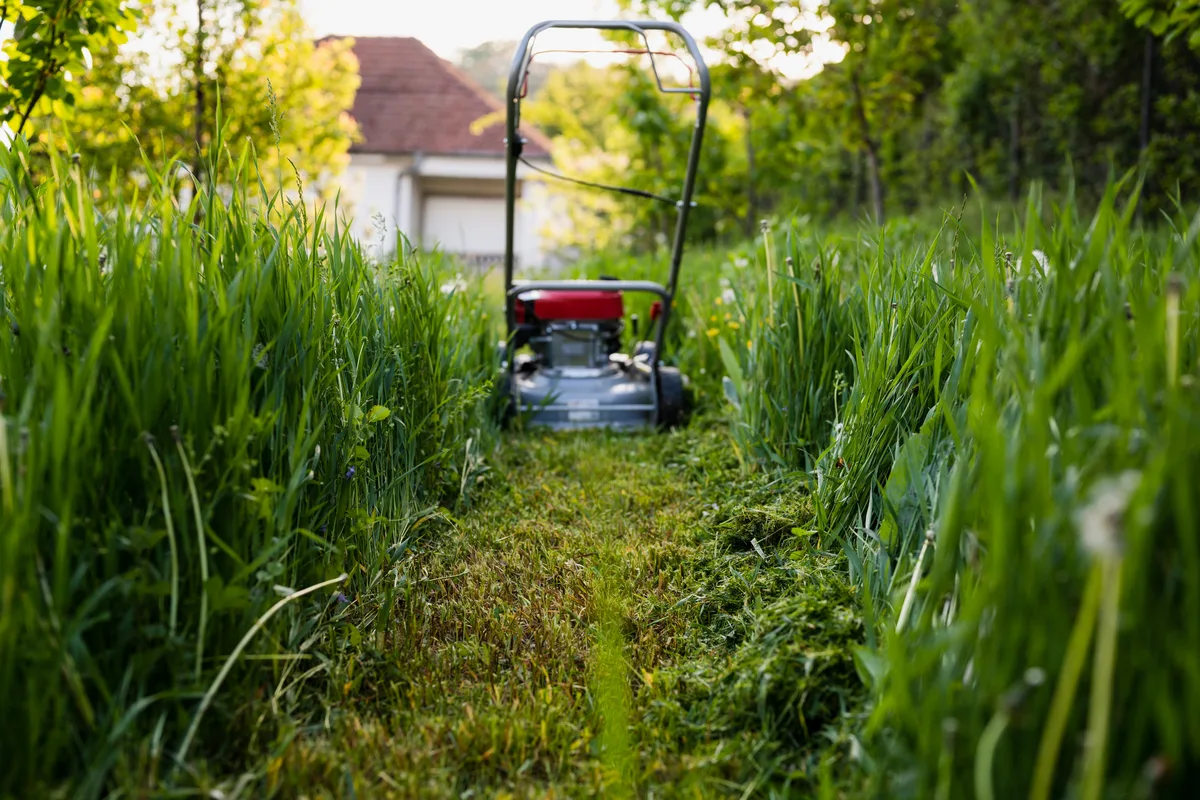
While it is possible to turn your entire lawn into a wildflower meadow, it’s not a permanent solution for everyone. However, if you have the extra land to devote to native wildflowers, go for it!
But don’t let the lack of a meadow stop you from not mowing the lawn. That’s something we can all do. If you really aren’t using your lawn at this time of year, but still need to get to a shed for gardening tools, the easiest way to maintain balance of mown/unmown is to cut a simple path and stop there.
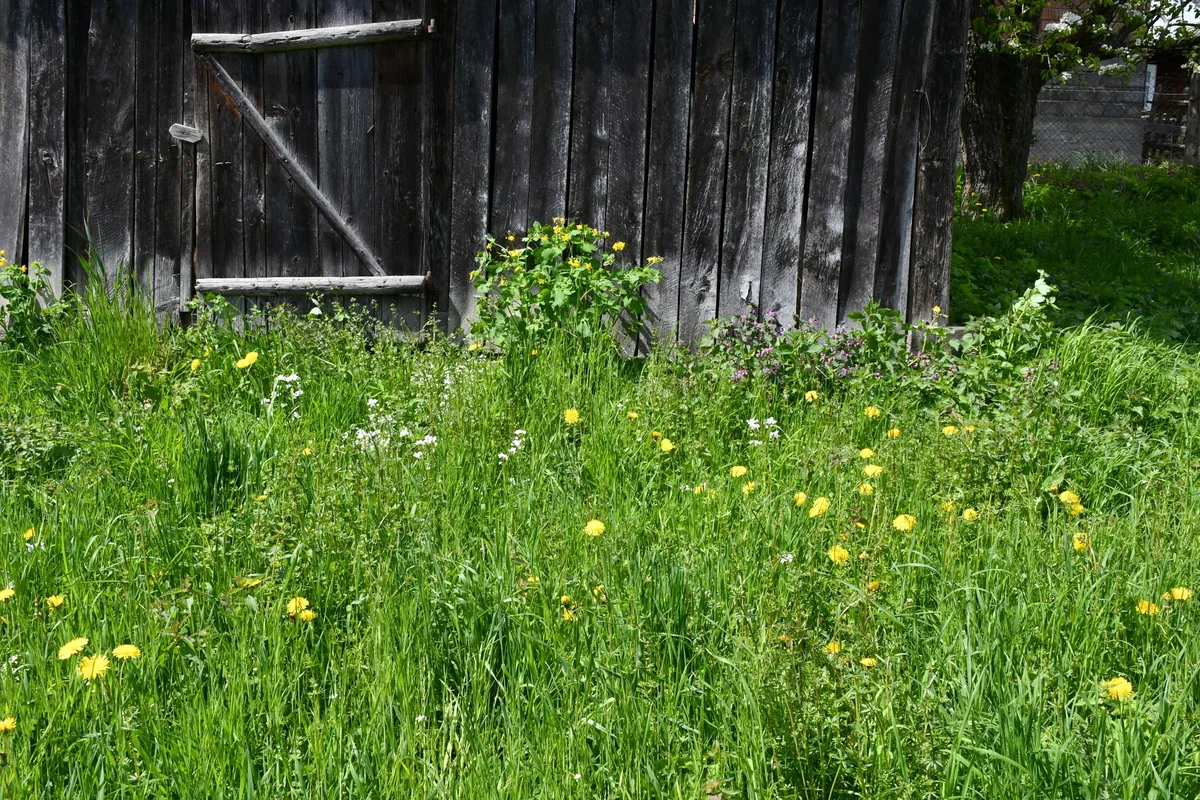
5. Mow Less May
An alternative to No Mow May is to simply mow less often.
If you typically mow once a week, see what happens when you do it every two weeks. In this way, dandelions and clover will still bloom, leaving the pollinators with something to choose from.
To do this, set your mower to the highest height. Mowing the grass and other plants at a height of 3.5 to 4″ actually promotes a healthier, more drought-tolerant lawn.
At the same time, it’s beneficial to create a “pollinator paradise“, so you don’t have to rely on not mowing alone to attract insects to your backyard.
Save The Bees, Grow Some Edible Weeds – People Will Still Complain
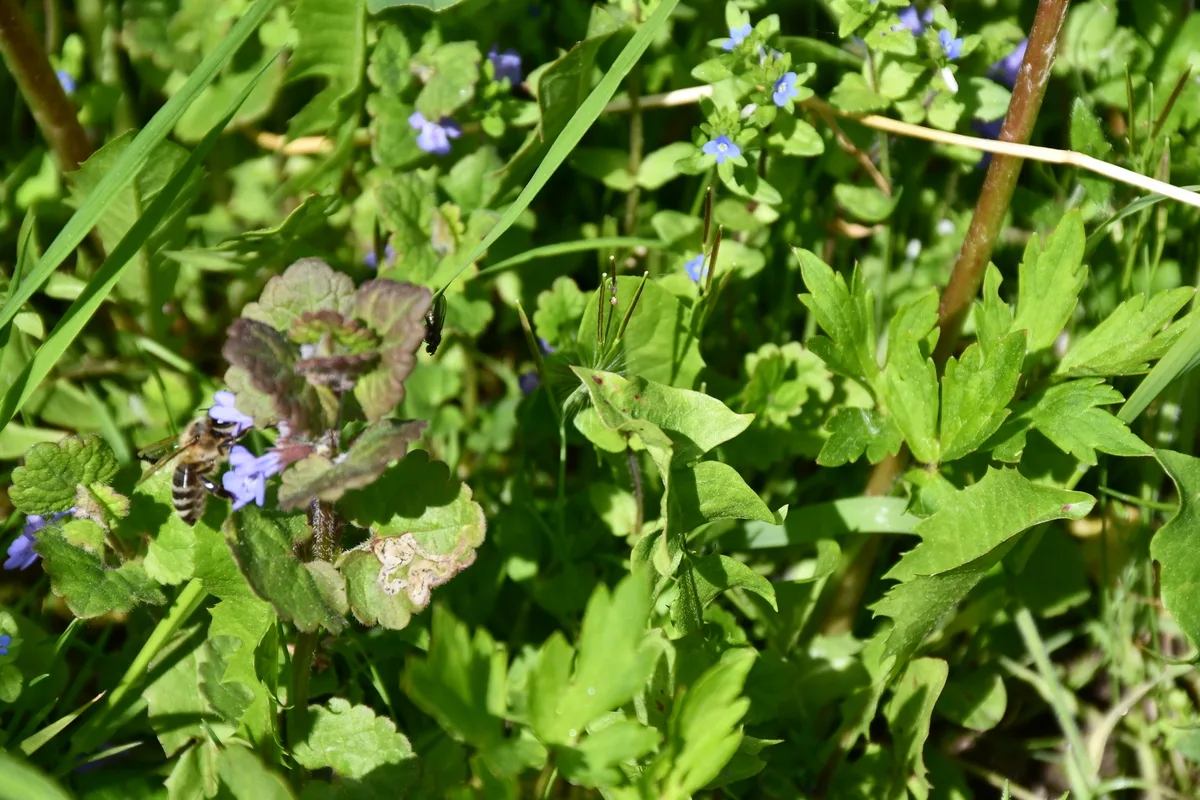
When you can forgo the vast amount of chemicals associated with keeping a lawn green, you’d think you are doing a good thing.
And you are. Although there will always be the opposing party with very different ideas.
While you are after floral diversity as well as nectar and pollen production, they will be after the ideal lawn. Here are some resources to help educate them on the matter.
Knowing that you don’t have to water your lawn to stay green and that you are reducing your carbon emissions from not using a gas-powered lawnmower, should make you feel wonderful about helping the Earth.
With the realization that any patch of unmown land will help in catering to a plethora of insects, how much land will you be dedicating to No Mow May?

Get the famous Rural Sprout newsletter delivered to your inbox.
Including Sunday ramblings from our editor, Tracey, as well as “What’s Up Wednesday” our roundup of what’s in season and new article updates and alerts.

